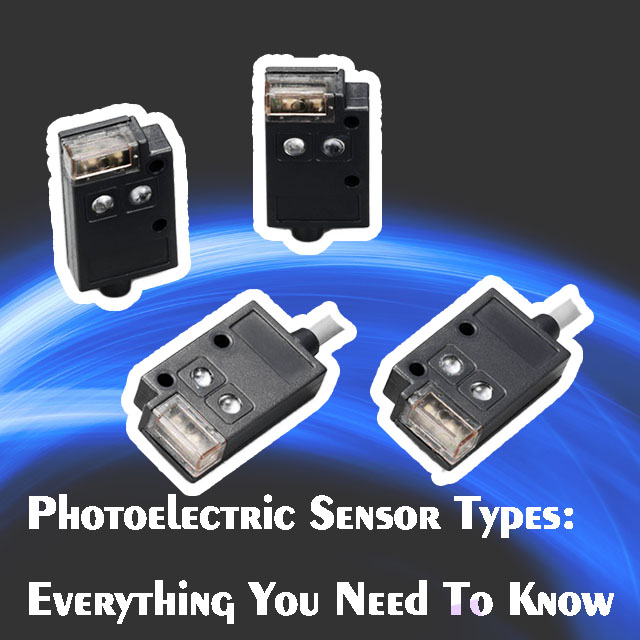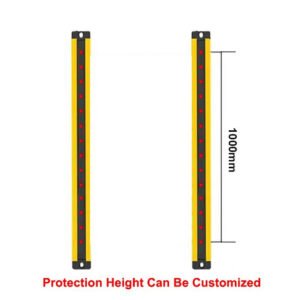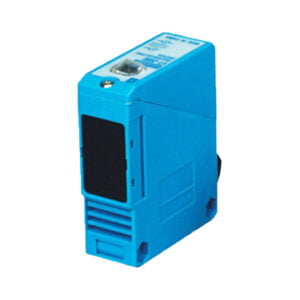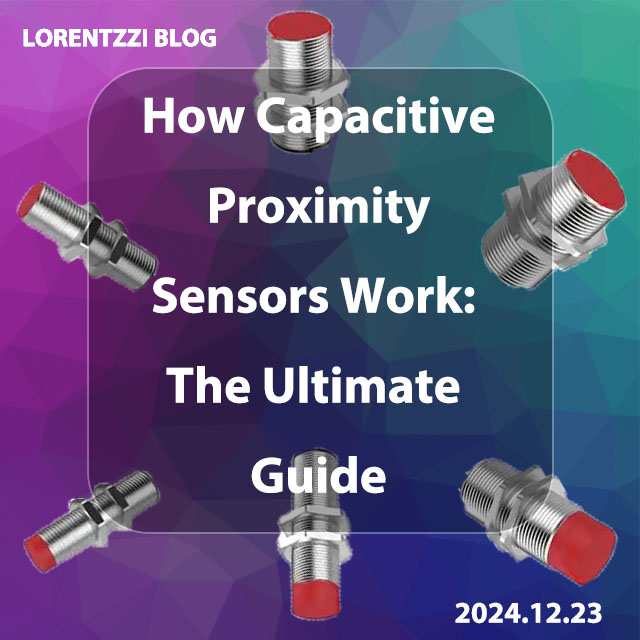¿Confuso sobre los tipos de sensores fotoeléctricos? Este artículo le ofrecerá una explicación exhaustiva de los tipos de sensores fotoeléctricos y sus ventajas desde una perspectiva única. Empecemos a aprender ahora.
Índice
¿Qué es la barrera fotoeléctrica?
Los sensores fotoeléctricos, también conocidos como interruptores fotoeléctricos, conmutadores fotoeléctricos, ojos fotoeléctricos, etc., son dispositivos que convierten los cambios de luz en salida de señal eléctrica. En pocas palabras, un sensor fotoeléctrico consta de 4 partes: un emisor de luz infrarroja, un receptor fototransistor, un convertidor de señal y un amplificador.

Tipos de fotocélulas
En función de los diferentes principios de funcionamiento y distancias de detección, existen tres tipos de barreras fotoeléctricas: barreras fotoeléctricas de barrera difusa, de barrera retrorreflectante y de barrera fotoeléctrica de barrera. Los explicaremos uno a uno en el siguiente contenido.
Barrera fotoeléctrica difusa
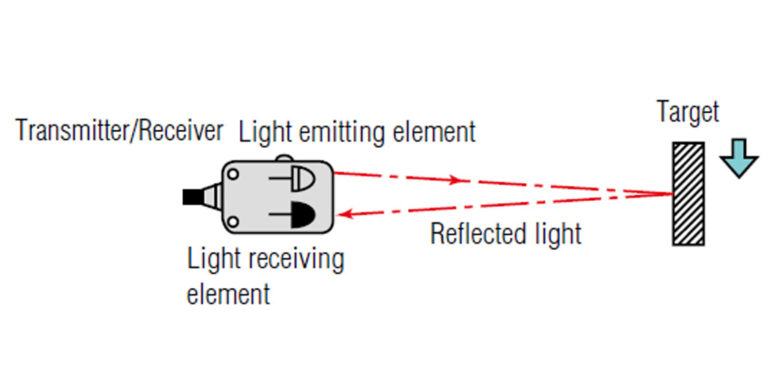
El sensor fotoeléctrico difuso es un interruptor sin contacto basado en el efecto fotoeléctrico. Detecta la posición y la distancia del objeto objetivo emitiendo un haz de luz infrarroja y midiendo la intensidad de la luz reflejada.
Los sensores fotoeléctricos difusos se utilizan ampliamente en campos como el control de la automatización, la navegación robótica y la medición automática. A continuación se presenta el principio de funcionamiento de un sensor fotoeléctrico difuso.
Para comprender el principio de la barrera fotoeléctrica difusa, primero tenemos que entender qué es reflexión difusa es. La reflexión difusa se refiere al fenómeno de que la luz paralela se proyecta sobre superficies irregulares, cóncavas y convexas, y se refleja en todas direcciones. Cuando inciden rayos de luz paralelos sobre una superficie rugosa, los rayos de luz se reflejan aleatoriamente en todas direcciones. La razón por la que el ojo humano puede ver todo el objeto se debe principalmente a la imagen de la luz difusa reflejada en el ojo.

El principio de funcionamiento del sensor de reflexión difusa se basa en el principio de reflexión de la luz. Cuando un haz de luz incide sobre la superficie de un objeto, parte de la luz será absorbida por el objeto, y la otra parte de la luz se reflejará. Esta parte de la luz reflejada se debilitará y será recibida por el receptor. Dado que existe una diferencia de intensidad entre la luz emitida y la luz reflejada, el sensor puede utilizar esta diferencia para activar el circuito de salida.
Barrera fotoeléctrica de reflexión
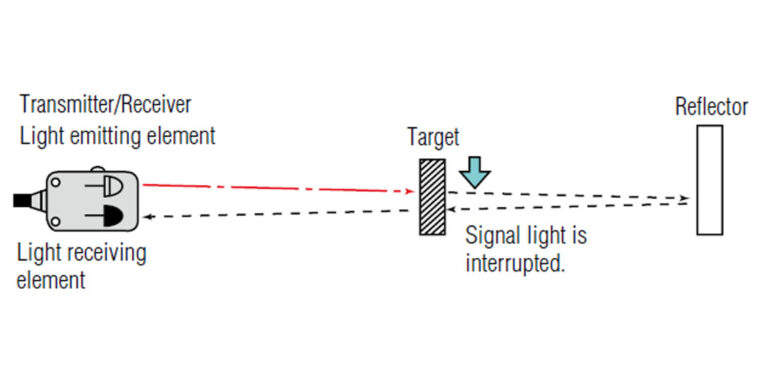
En comparación con los sensores fotoeléctricos difusos, los sensores fotoeléctricos retrorreflectantes necesitan espejos. Funcionan según el mismo principio que un sensor difuso. La luz se emite hacia un reflector, que refleja la luz hacia el receptor. Cuando un objeto bloquea la luz, el receptor detecta la reducción o interrupción de la luz. Se activa entonces el circuito de salida.
La distancia de detección de este tipo de sensores es mayor que la de los sensores difusos porque se pierde menos luz y la mayor parte de ésta se refleja en el receptor(Click aquí para ver por qué).
Barrera fotoeléctrica de barrera
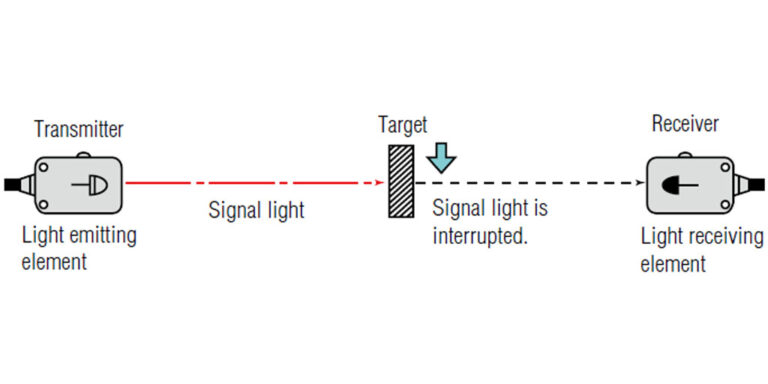
Principio de funcionamiento de la barrera fotoeléctrica de barrera: El emisor y el receptor están situados a ambos lados del objeto a medir, y la luz emitida por el emisor atraviesa directamente el objeto a medir y llega al receptor. Cuando el objeto sometido a prueba bloquea la luz, el receptor detecta una disminución o interrupción de la luz.
Aplicaciones: Adecuado para detectar objetos transparentes o translúcidos y situaciones de larga distancia.
Características: La distancia de detección es larga y se ve menos afectada por la luz ambiental, pero requiere que el transmisor y el receptor se instalen a ambos lados del objeto.
Conclusión
En total, existen tres tipos de barreras fotoeléctricas: barreras fotoeléctricas de reflexión directa, barreras fotoeléctricas de reflexión retrorreflectante y barreras fotoeléctricas de barrera. En cuanto a los sensores, las barreras fotoeléctricas de barrera tienen la mayor distancia de detección, las barreras de reflexión se sitúan en el medio y las barreras de reflexión difusa tienen la menor distancia de detección.
Lorentzzi, como proveedor chino de sensores fotoeléctricos, puede proporcionar los 3 tipos de sensores fotoeléctricos con la mejor calidad, haga clic en aquí para verlos o Contacto para conocer nuestros últimos precios.

